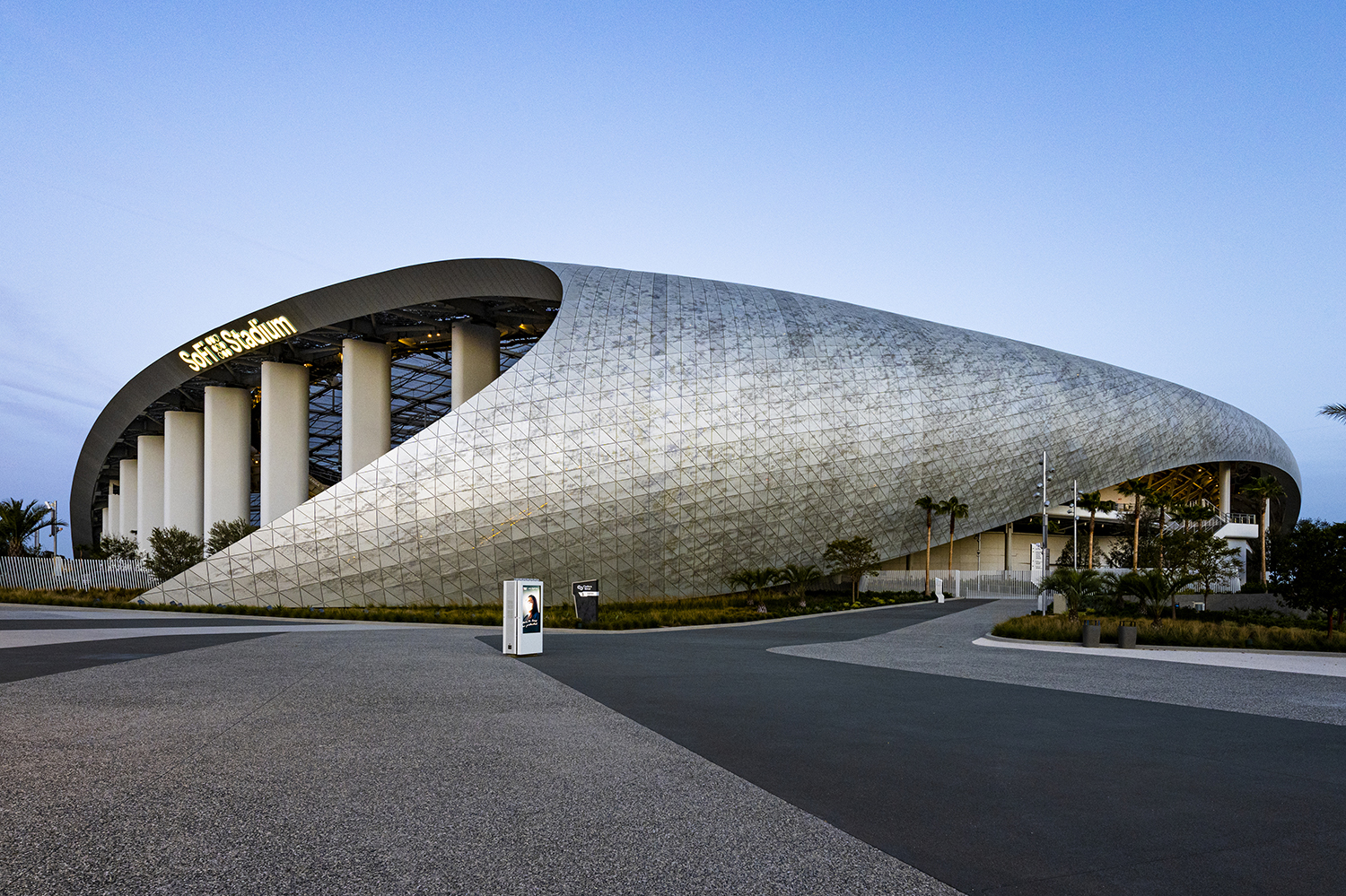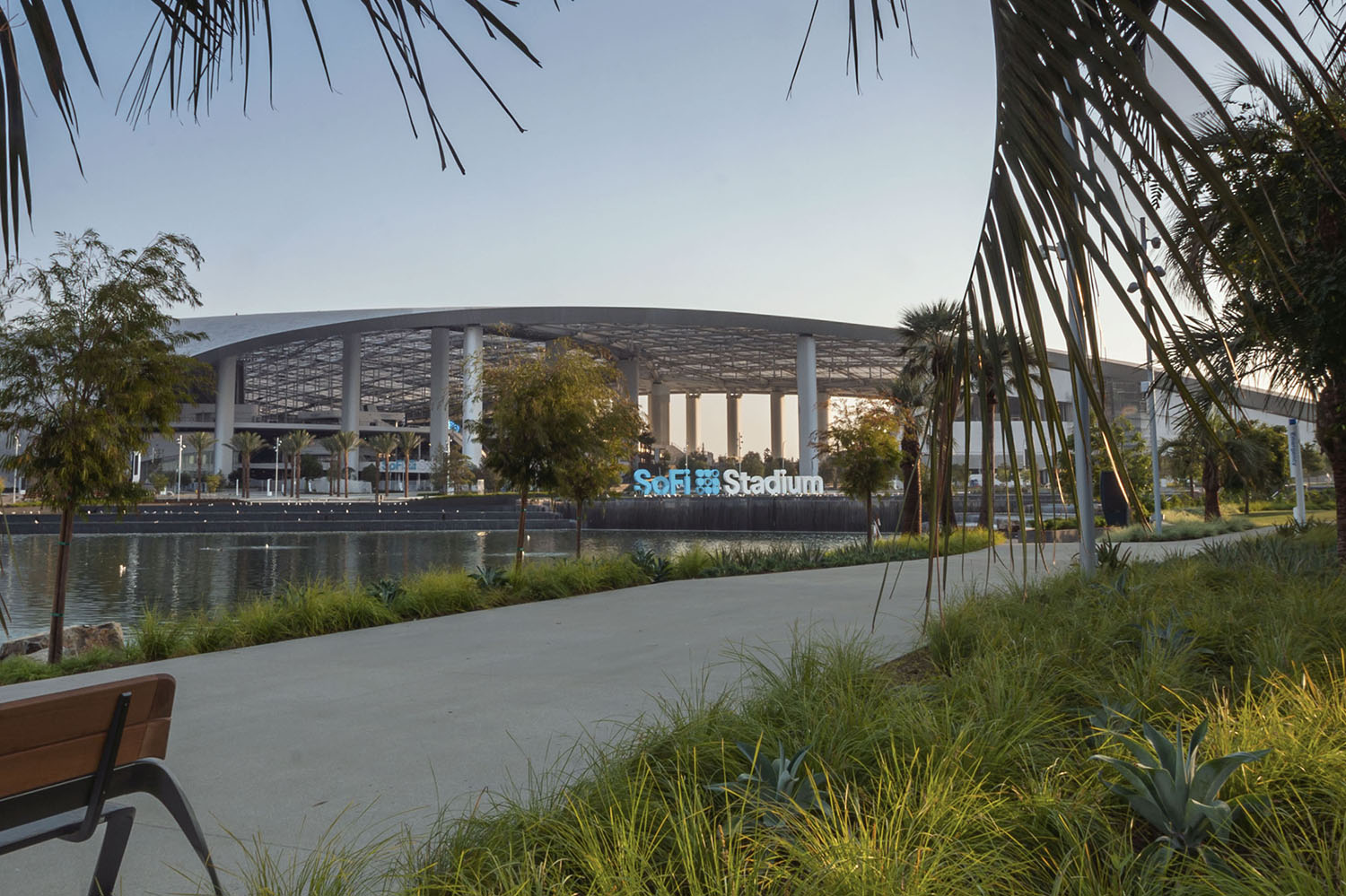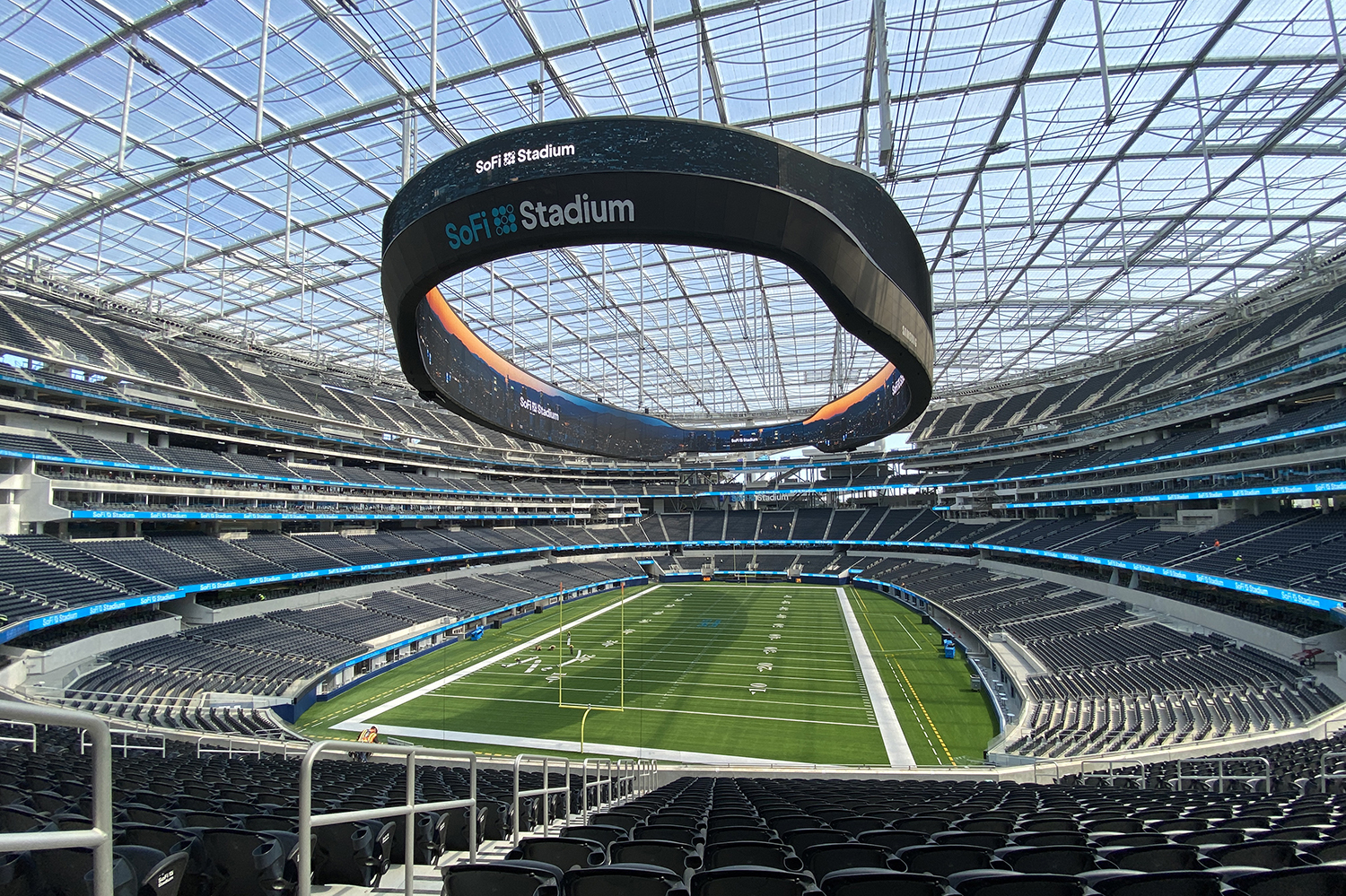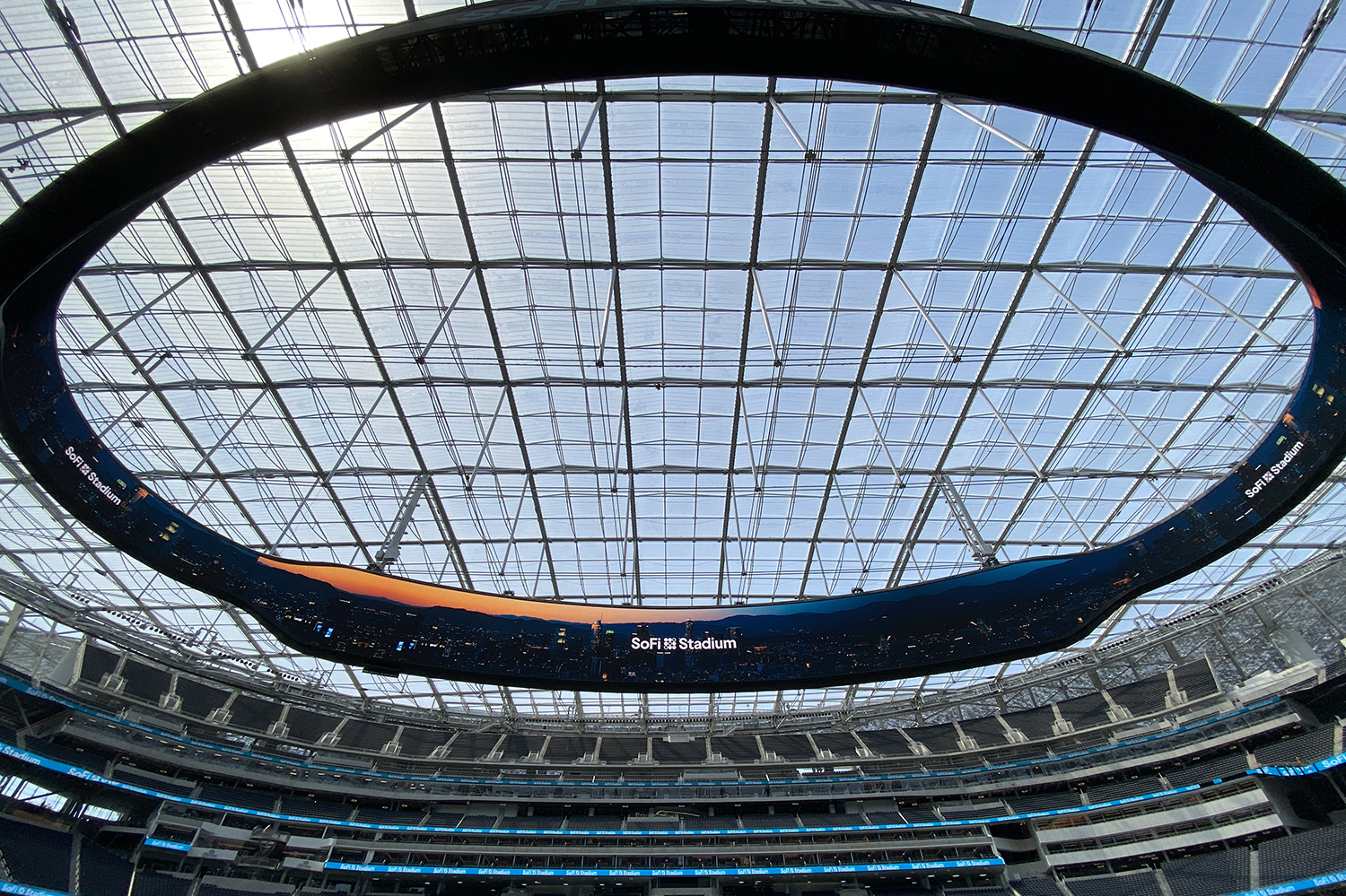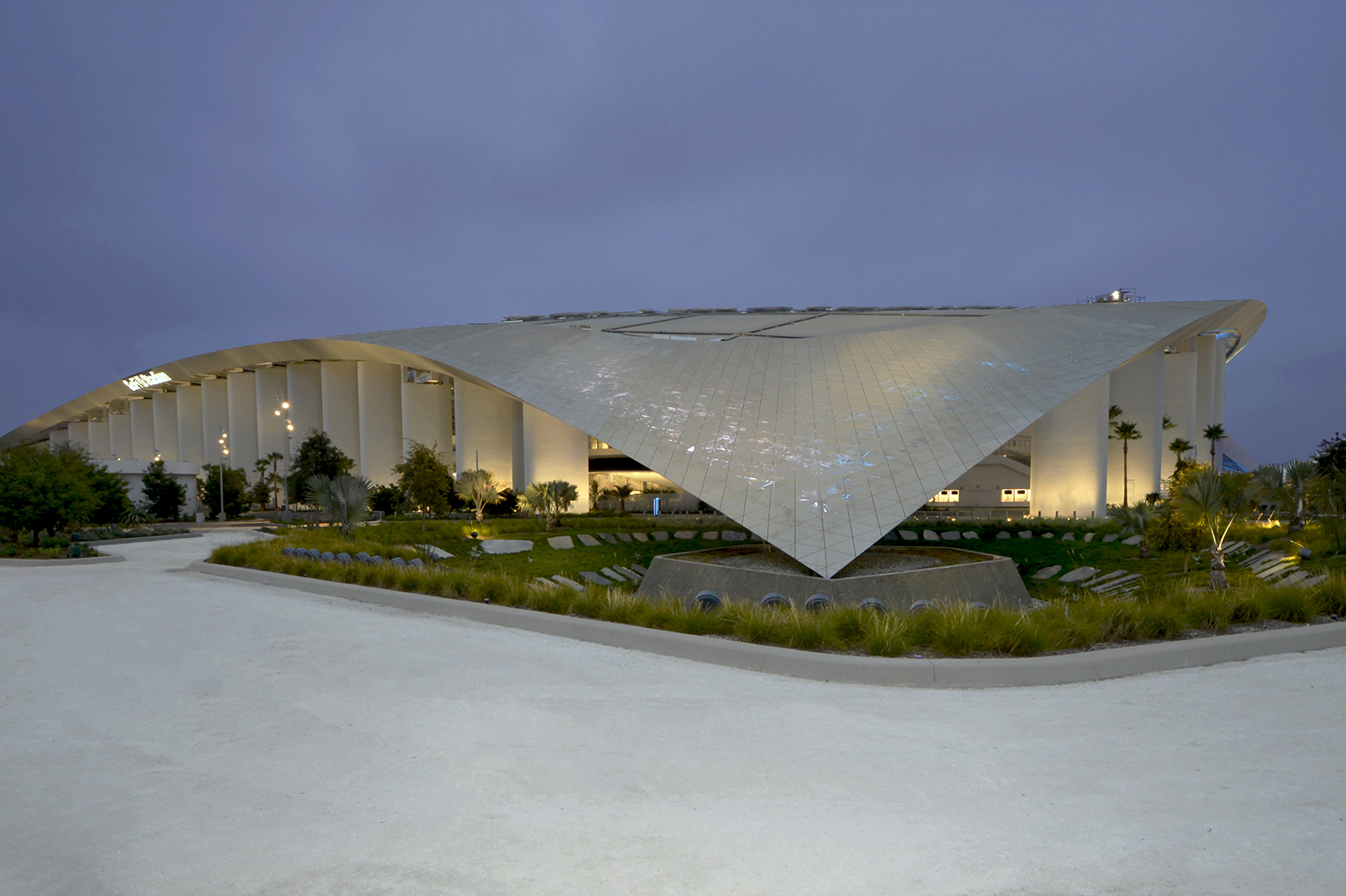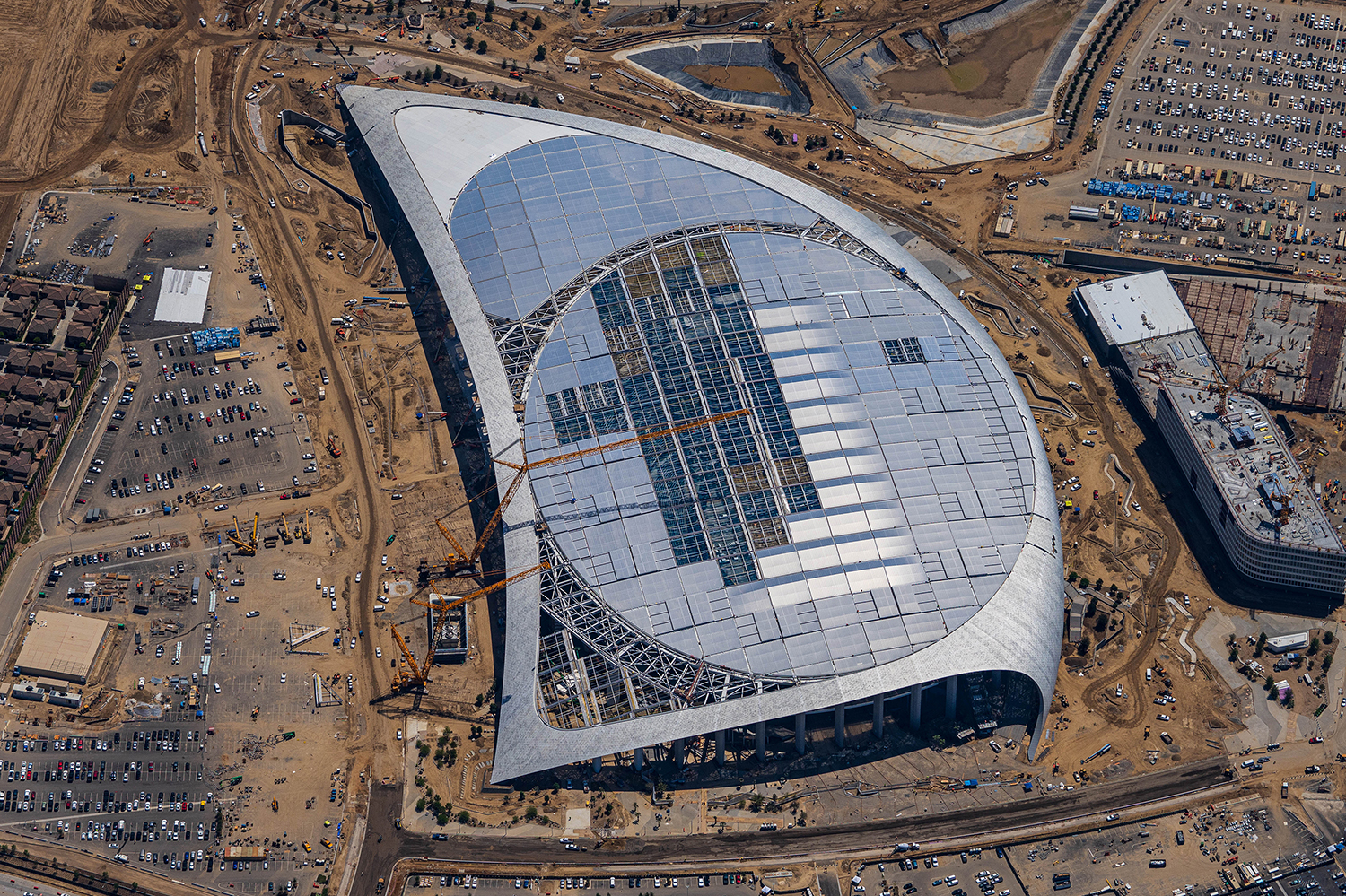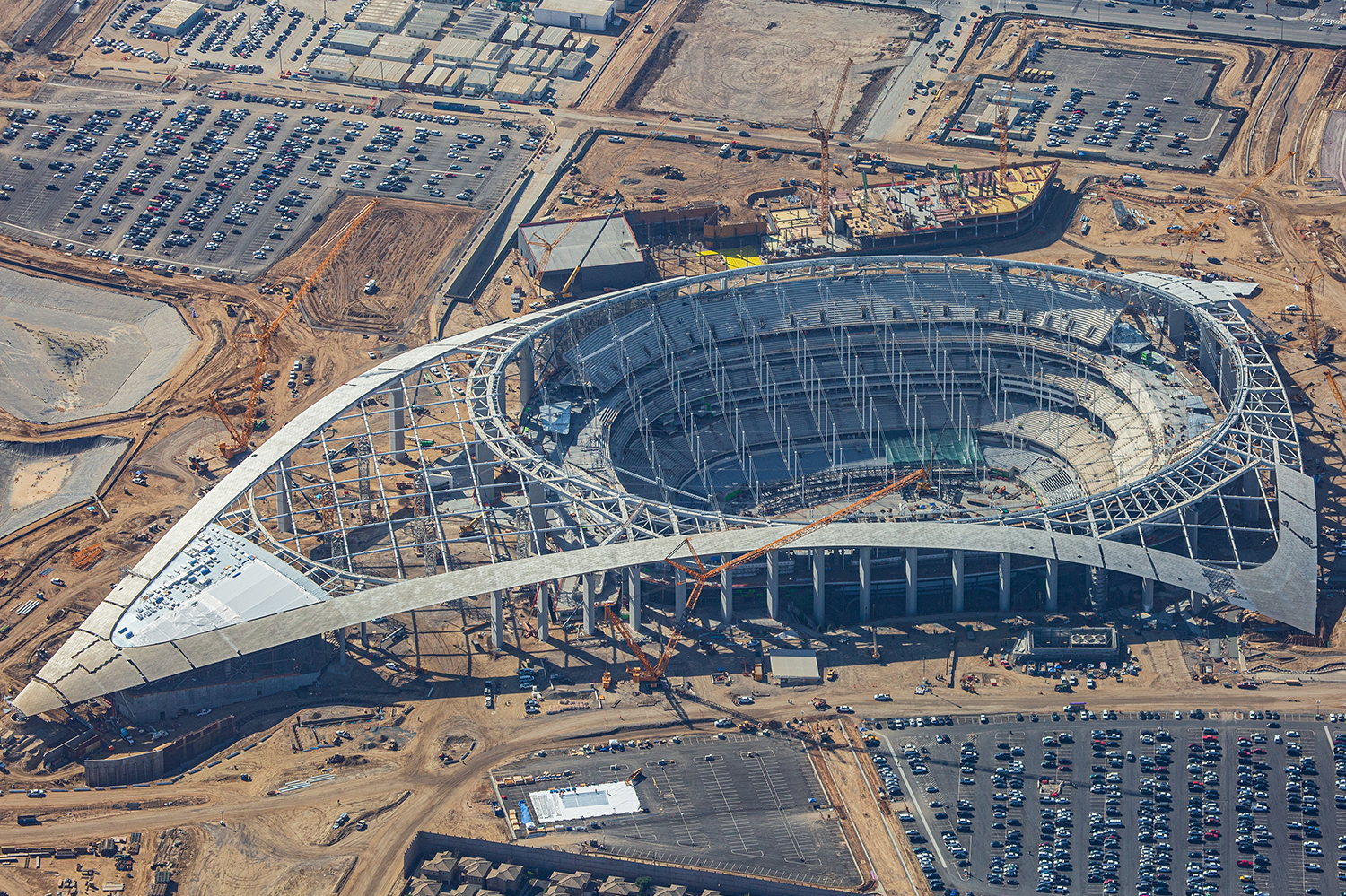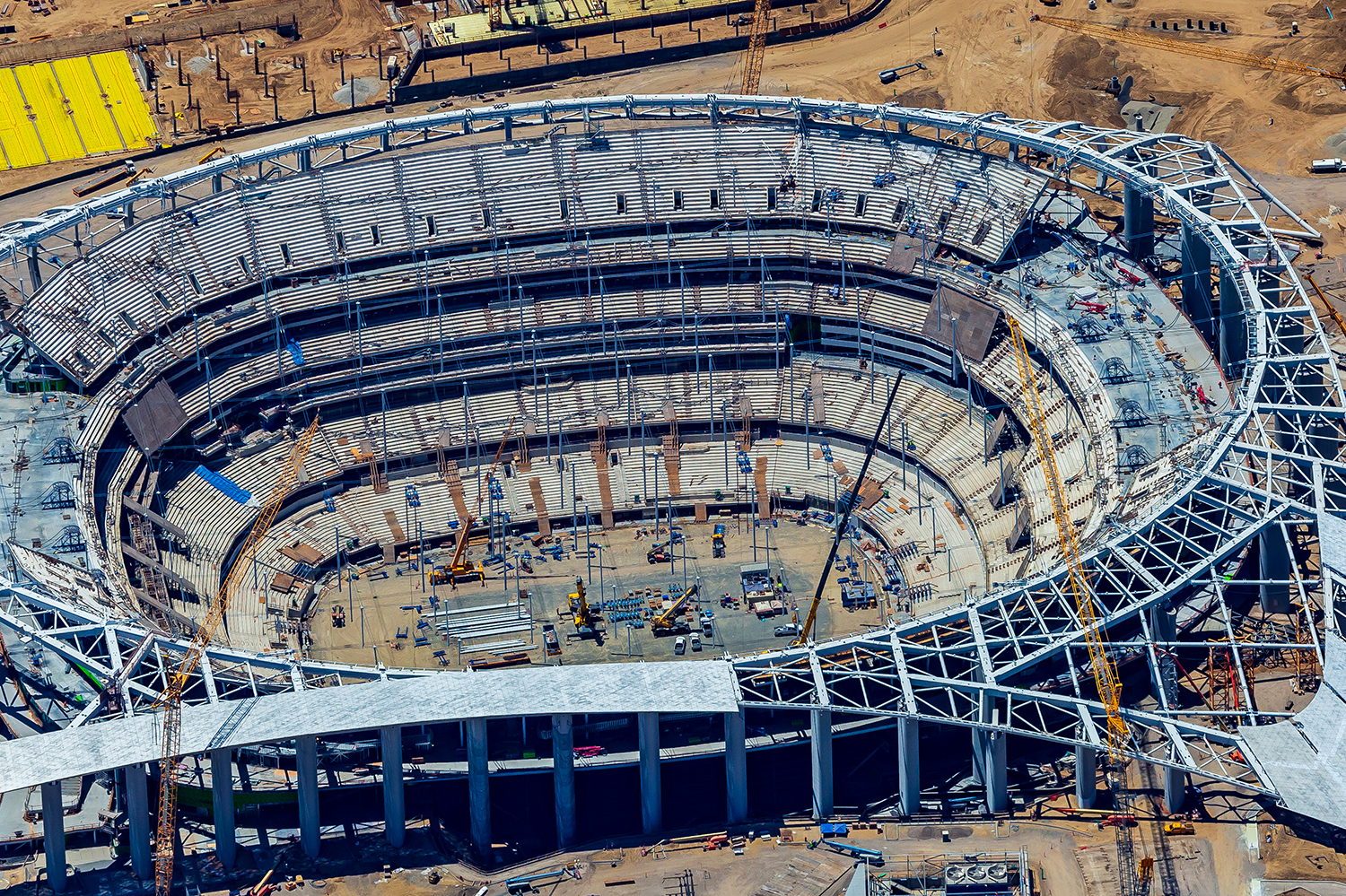AISC
SoFi Stadium
National Award - Greater than $200 million
It takes true innovation to make a below-grade structure surrounded by a 100-ft-tall, mechanically stabilized earth wall feel light, but the SoFi project team did just that.
Home to the Los Angeles Rams and Los Angeles Chargers of the NFL, the 3.1 million-sq.-ft stadium seats 70,000 and can be expanded to 100,000. It sits in close proximity to the Newport-Inglewood fault and also in between flight paths to Los Angeles International Airport (LAX), just three miles away. Due to its proximity to LAX and the subsequent FAA requirements, the playing field was driven 100 ft into the ground, and a record-breaking 100-ft-tall mechanically stabilized earth wall created a moat around the entire stadium, giving it room to safely move during a seismic event. In addition, an advanced structural system featuring buckling-restrained braces (BRBs) and lock-up devices provides needed lateral strength.
The stadium realizes a grand vision that redefines what a venue can be, transcending NFL football to include a wide range of entertainment events, including Super Bowl LVI, the College Football National Championship Game in 2023, and the Opening and Closing Ceremonies of the Olympic Games in 2028. It’s topped by a sinuous, semi-transparent roof canopy, which is supported by the largest double cable-net system in the world. The canopy includes micro-operable panels to help maintain climate certainty for events, and the ethylene tetrafluoroethylene (ETFE) roof canopy columns are supported on a complex soil-isolated foundation system that extends outward from the stadium.
Steel was the right material for this project. Lightweight and strong, with excellent ductility, steel helps minimize seismic activity while providing excellent resistance. Just as the lightweight roof enabled the efficient spanning of the new stadium, the lightweight framing structure allowed efficient seismic resistance in a near-fault location. The cable net ETFE roof canopy and supporting steel frame with columns were designed with aesthetics in mind and driven by the indoor-outdoor nature of the stadium. They also support the Infinity Screen by Samsung, a circular video screen that hangs above the playing field.
The long-span roof canopy demanded a design that maximized material efficiency and lowered tonnage, resulting in seismic isolation and greatly reducing the roof accelerations, permitting a lighter and more elegant design. The use of isolation on a form so different from traditional buildings necessitated performance-based engineering with nonlinear dynamic analysis of the structural elements under numerous seismic ground motions. The roof canopy cable net structure was analyzed under a variety of support conditions, including superimposed loads from the 1,100-ton suspended video screen using 3D seismic acceleration. Additionally, an independent geotechnical analysis of the soil behavior under those same ground motions was performed to validate the final design, ensuring adequate decoupling of behaviors of the roof canopy, perimeter shell, column supports, grandstand, and MSE wall systems.
The stadium bowl was achieved by optimizing the 1,000+ discrete BRBs in the main grandstand and the surgical placement of 48 discrete custom viscous-damper “lock-up devices” (LUDs). These custom LUDs securely link the lower seating bowl levels during the potential occurrence of seismic activity while allowing the structure to expand and contract under normal thermal loads typical of an outdoor stadium. This required largescale use of thermal analysis and lock-up devices with buckling-restrained braced frames (BRBFs) to permit partial-height thermal joints, allowing uninterrupted concourses at upper levels by elimination of upper-level seismic joints.
The ETFE roof canopy is supported by the largest known double cable-net system at 1.3 million sq. ft. The cable net rests on a massive asymmetric steel compression ring that is, in turn, supported atop a system of 38 150-ft-tall segmental precast concrete columns located outside of the MSE wall. The compression ring is seismically isolated atop the columns with triple pendulum isolators. In another first, the roof canopy includes 46 operable mechanical panels that draw outside air from the sides and promote passive air circulation throughout the building. The canopy columns are supported on a complex soil-isolated foundation system extending outwardly from the stadium.
Nestled under the same roof canopy as SoFi Stadium is YouTube Theater, a 6,000-seat performance venue, and the 2.5-acre American Airlines Plaza. On the southwest side of the stadium is Lake Park, which features a six-acre lake that functions as a novel water recycling system by collecting 70% to 80% percent of the stormwater runoff from around the site, filtering it through natural wetlands and mechanical systems, and then using it to irrigate the surrounding parkland.
Judge comment: “It's really a special project, and its setting is really thoughtful. The use of the structural steel is almost overwhelming because it in many ways feels as grand and as spectacular as any of the great churches that you may have been in--I hate to sound like I'm saying that it's a church because it's a sporting facility, but in many ways it has a magical quality to it. There's a lightness to it that really elevates the spirit. It's a dramatic experience.” -Anders Lasater, AIA, architect and principal, Anders Lasater Architects
Owner: Hollywood Park, Inglewood, Calif.
General contractor: Turner Hunt Joint Venture, Inglewood, Calif.
Architect: HKS Architects, Inc., Dallas
Structural engineer: Walter P Moore, San Francisco
Fabricator/erector/detailer (stadium bowl): SME Steel Contractors, West Jordan, Utah *AISC full member, AISC-Certified building fabricator and erector*
- Project Category: Year 2023
- Location: Inglewood, CA
- Submitting Firm: Walter P Moore
- Photo Credit: SoFi Stadium

